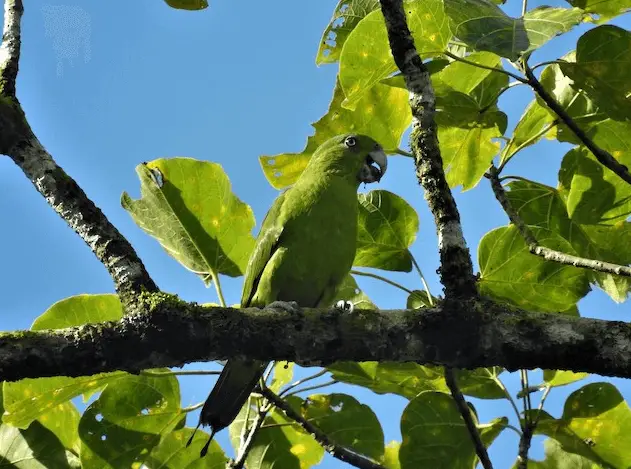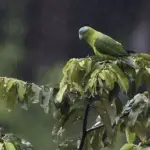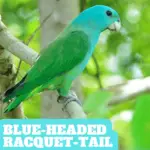
Mindoro Racquet-tail 27 cm. Very similar to formerly conspecific P. discurus (see Taxonomy comments). Head bright green strongly suffused powder-blue on the crown (but green on forehead), upperparts mid-green, wings green darker on inner webs of flight feathers, outer primaries blue-green,
underwing-coverts green and underside of flight feathers greenish-blue, underparts light yellowish-green, upper tail green, the outermost tail feathers blue at the base with black tips;
under tail strongly suffused blue, spatules blackish (longer than in P. discurus); bare parts: bill whitish, iris dark brown, and legs and feet grey.
Sexes basically alike, although female has shorter tail racquets. Immature has less blue on the crown and lacks tail racquets.
Prioniturus mindorensis Scientific name definitions
- VU Vulnerable
- Names (14)
- Monotypic
Systematics History
Part of the P. platenae clade (which see). Until recently considered conspecific with P. discurus, but differs in its soft (matt) powder-blue vs bright (glossy) turquoise mid-crown to the hind crown, matt green vs bright glossy emerald-green face (lores, ear-coverts, moustachial area), and longer tail (effect size 4.2, score 2);
split reinforced by genetic findings. Has sometimes been considered conspecific with P. flavicans (but recent reinforcement of split, when united with P. discurus ), and previously with P. platenae. Monotypic.
Subspecies
Monotypic.
Distribution
Mindoro (NC Philippines).
Habitat
Occurs in humid forests, mainly in lowlands, but is reported to be 1670 m.
Sounds and Vocal Behavior
No known differences from P. discurus.
Conservation Status
Conservation status on BirdlifeVU Vulnerable
VULNERABLE. CITES II. Population provisionally estimated at 2500–9999 mature individuals, within an overall range of 9900 km².
The species Mindoro Racquet-tail population is inferred to be in continuing decline due to ongoing trapping pressure for the pet trade and habitat loss (agricultural expansion, logging for timber, and development). The most recent records are from Parrot tour groups visiting Siburan IBA.




















